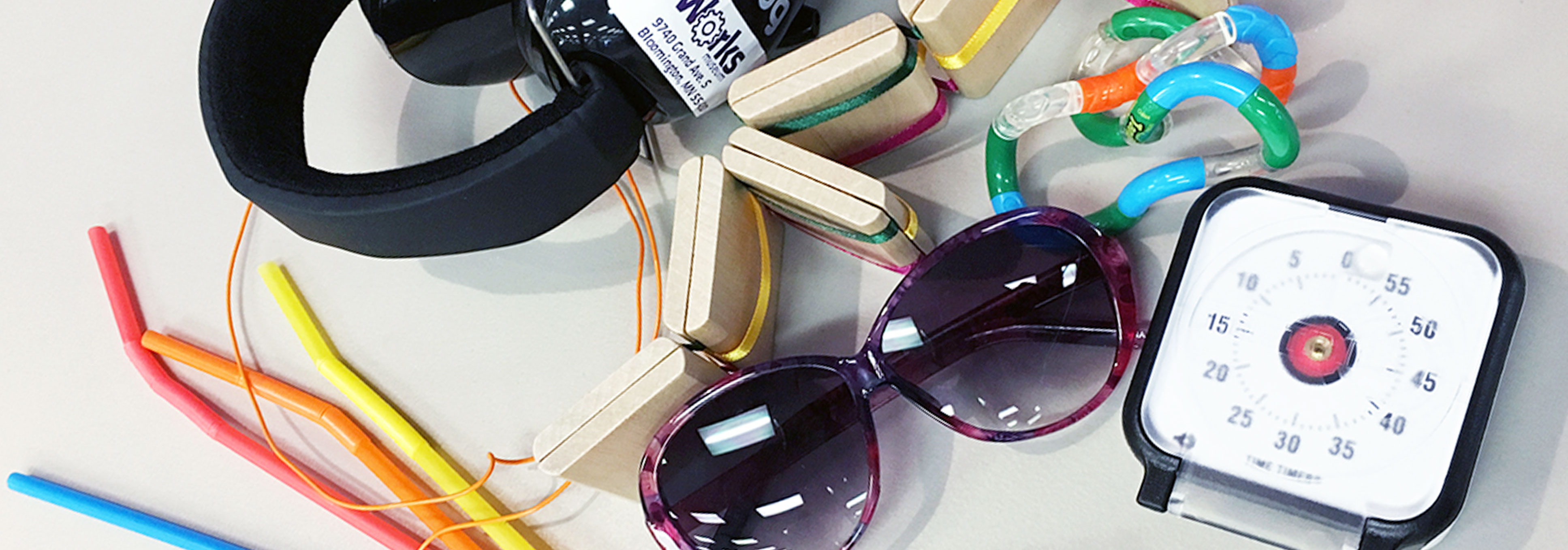
Sensory Friendly Information
Information for visitors who need sensory-friendly accommodations:
Scheduling your visit
The Works Museum is often hosting school groups. Depending on group size, age of students, and the skill of their adult chaperones, a visiting school group can make the museum floor noisier and more chaotic. You can call the Museum’s general number 952.888.4262 the day of your visit to ask about school group visits scheduled for the day.
Here are some other time frames when the Museum is typically quieter:
- During the school year: Mondays, Thursdays, Fridays, 1:30-3 p.m.; Saturdays and Sunday, 3-5 p.m.
- During the summer: Mondays through Thursdays, 3-5 p.m.; Saturdays and Sundays: any time that the weather is not rainy or exceptionally hot.
Preparing for your visit
Social story to view with your child pre-visit:
Equipment and materials are shared at the Museum:
- Let your child know that most of the activities at The Works Museum include tools and materials that are shared with other visitors.
- It will be helpful to agree to some parameters around construction and destruction, and practice with your child ahead of time:
- “Other children should not touch the construction you are building. If they try, say ‘Please don’t touch that,’ in a loud voice.”
- “If another child asks if they can help you build, you can tell them ‘yes’ if you want them to, then you can have fun building together.”
- “If you don’t want anyone else to touch your construction, you can say ‘No, I would like to build alone,’ if you don’t want them to help you.”
- “Do not touch other children’s constructions unless you ask that child first and they say ‘Yes’ or shake their head yes.”
- “If another child tells you ‘No,’ or shakes their head no, do not touch what they are building.”
K’Nex Ball Machine:
- This ball machine is the Museum’s most popular attraction and is especially mesmerizing for some visitors.
- If you anticipate that your child may get “stuck” watching the machine, you may want to agree to some parameters with your child ahead of time. You may want to use strategies such as using a time timer or an incentive to ease transitions.
- Discuss with your child that visitors are not allowed to touch the machine; it will stop working if visitors handle it.
NOTE–The Machine is being rebuilt during spring 2018:
- It will be bigger and better!
- It will be moved further away from the railing to reduce the temptation to touch the machine.
- An access point is being added, where kids can put a ball into the machine themselves.
During your visit
Sensory-friendly kits:
- Are available for check-out, free of charge, from our front desk staff.
- Include headphones, time-timers, fidgets, gloves, and sunglasses.
- Some of the fidgets (bendy wires and bendy straws) don’t have to be returned, so they can be used as transitional objects if needed.
- Please return kit and kit items to the front desk at the end of your visit; we also ask that you complete a short survey.
Sightlines on our Museum Experience floor:
- Are located in one large room, making it easy to supervise your child.
- Accompany your child at all times, especially near the K’Nex Ball Machine or by the family bathrooms located off the hallway to the right of the “Be Safe, Be Seen” exhibit. Both areas are located near exit doors.
Building activities:
- If your child is extra-sensitive to having his or her work destroyed or is really into demolition, please stay in the immediate area of the activity, so that you can monitor your child’s project and materials.
- If you need any assistance with situations involving other visitors, go to the front desk and inform a staff person about the situation.
A quiet corner:
- The Inspiration Station is a room in one corner of the Museum, across from the Sensory Maze. It is often a quieter area.
- The Inspiration Station features drawing activities, books, and a cuddly couch.
The Workshop:
- Located on the second floor across from the stairs by the K’Nex Machine, this is an area featuring activities for families to do together. It is often less chaotic during busy times. School groups are not allowed in The Workshop.
For staff that assist students with special needs during school group visits:
- Sensory-friendly kits are available for school visits as well. If you would like to check one out, ask the staff person who greets your group.
- Chaperones must accompany students at all times.
- Only Museum staff are allowed to touch the K’Nex Ball Machine, so we ask that you discuss this with your students before your group visits the Ball Machine.
- If your class is taking a Feel the Noise or Catapults workshop, we recommend headphones because of the number of students hammering at the same time. If your student does not have headphones, ask the staff person if there is a pair available for check-out.
- If you need a quiet room to calm a student in, ask a staff person.
School-break and summer camps:
- Camps at The Works Museum focus on engaging, hands-on learning and high-interest content, which make them appealing for children who have neurological or behavioral disorders; many children with sensory issues have participated in our camp program successfully.
- Summer camp educators and support staff participate in yearly training on working with children on the autism spectrum. Camp educators and counselors are trained to give campers sensory breaks when needed.
- Summer camp staff call parents/guardians of every camper with a neurological or behavioral disorder to learn about classroom strategies that work best with their child. This information is then shared with educators and camp assistants working directly with your child. If your child has a special fidget or needs headphones, let the caller know that you will be sending these items with your child.
- If your child has a classroom assistant that works with them one-on-one during the school year, we recommend that the child have a one-on-one assistant for our camps. Although our camps feature a more relaxed atmosphere, hands-on learning, and outdoor breaks, they are still academic in nature. The majority of camp time is spent in a classroom.
- Most camps have an educator and an assistant. The camp assistant works with all campers and is not assigned to assist one child.
- For many children with sensory issues, a half-day camp for the week works better than attending a full week of programs (morning camp and afternoon camps combined during the same week), or even a full-day program. Some children become overwhelmed, and prone to meltdowns, by mid-afternoon.
- Please observe the listed age-range for a camp.
- If your child is taking a carpentry camp, we recommend headphones because of the number of students hammering at the same time.
- This year, every camp will have a quiet corner for campers who need some retreat time. The quiet corner will be stocked with pillows, fidgets and books.
